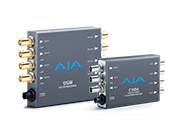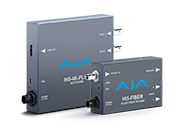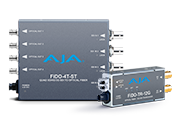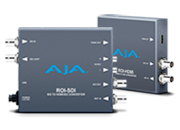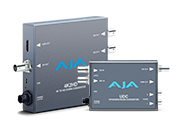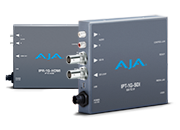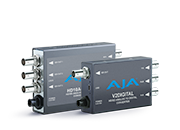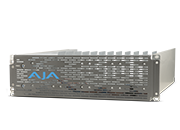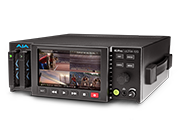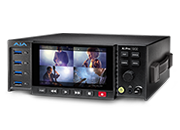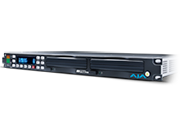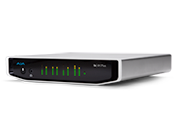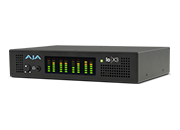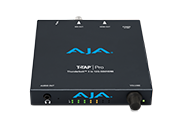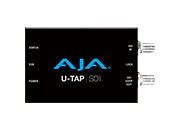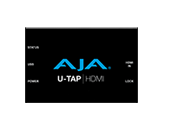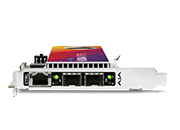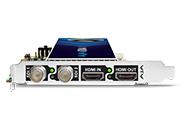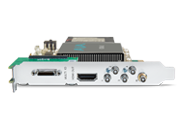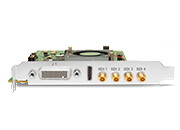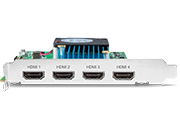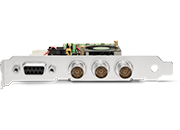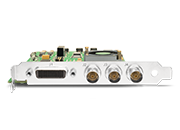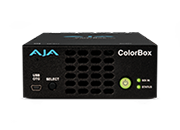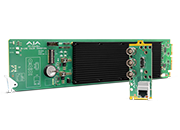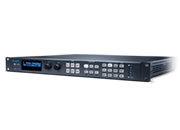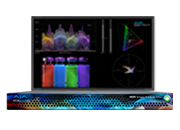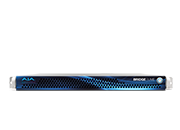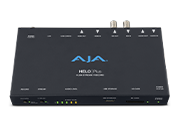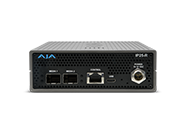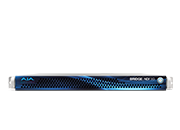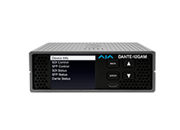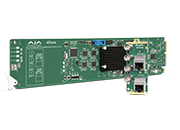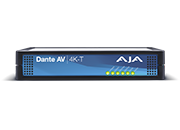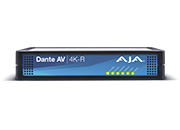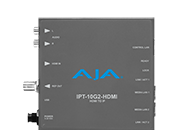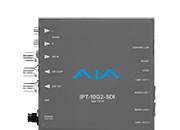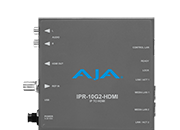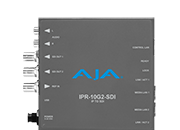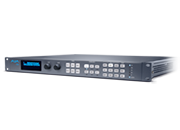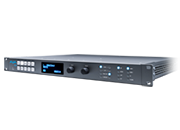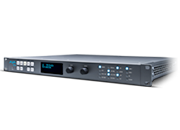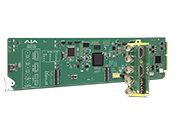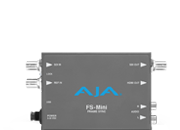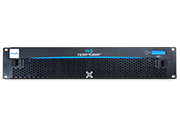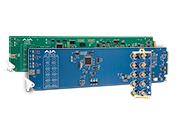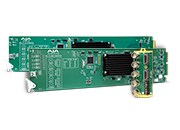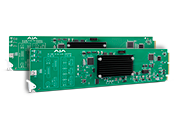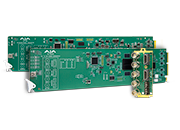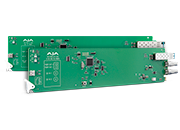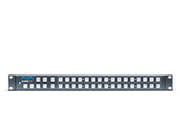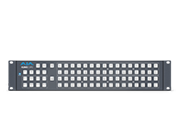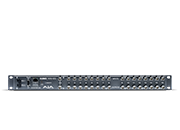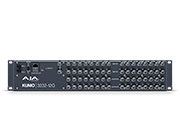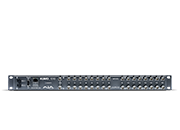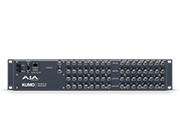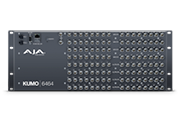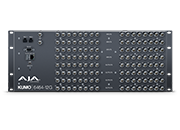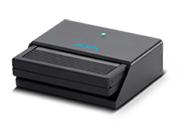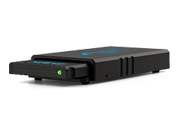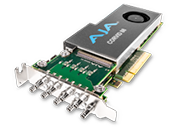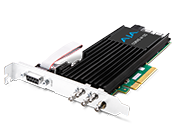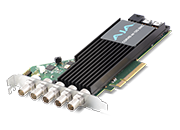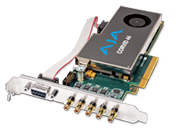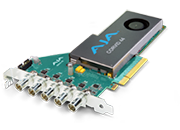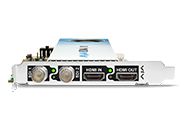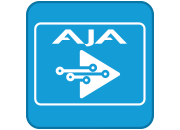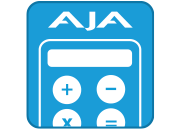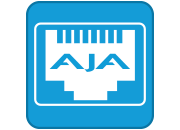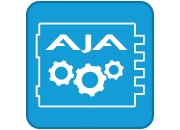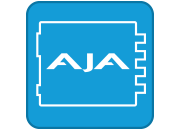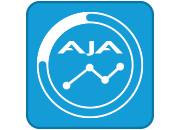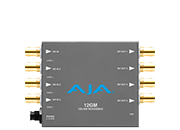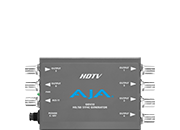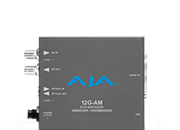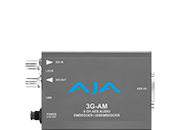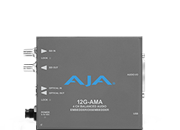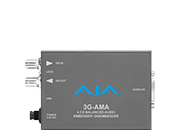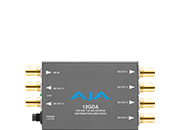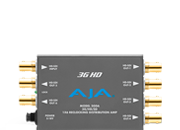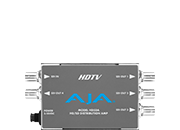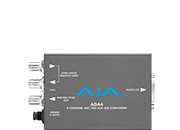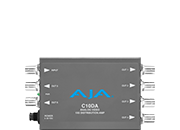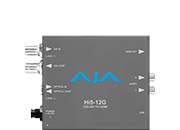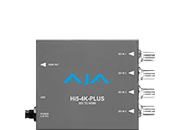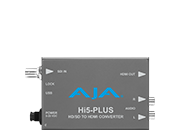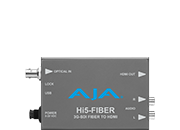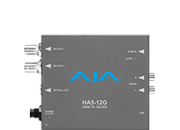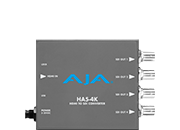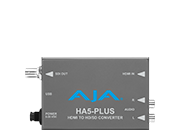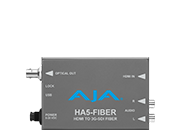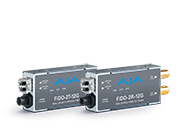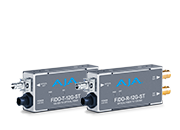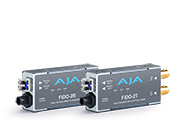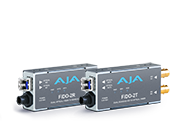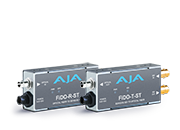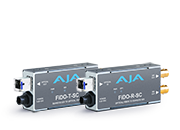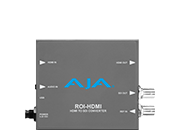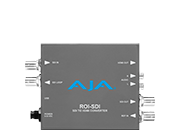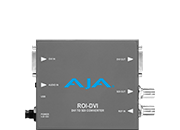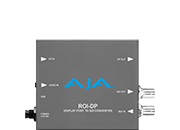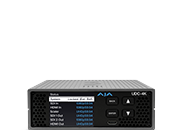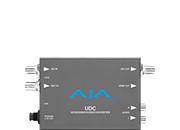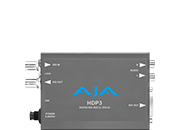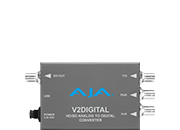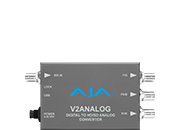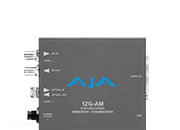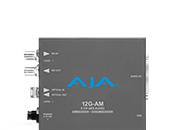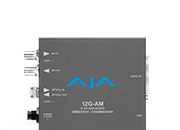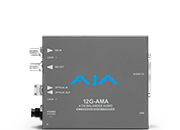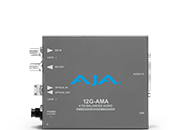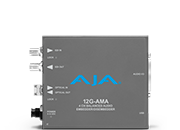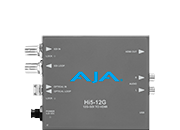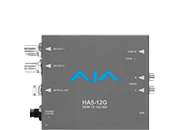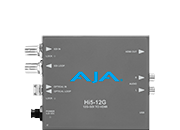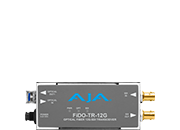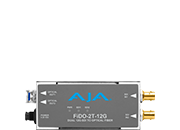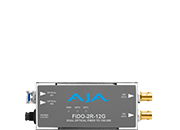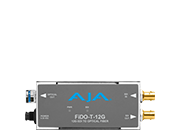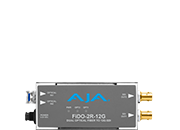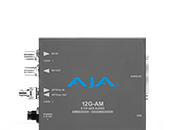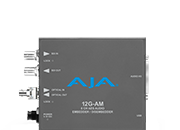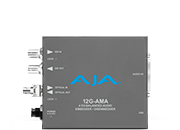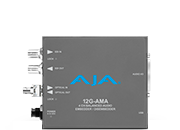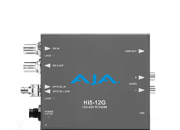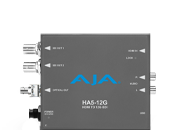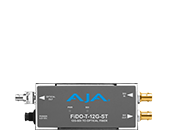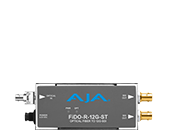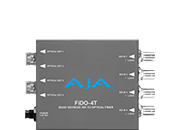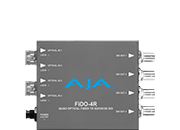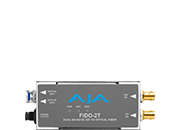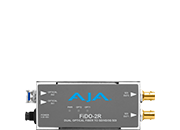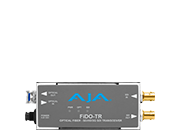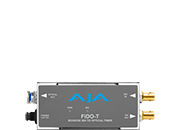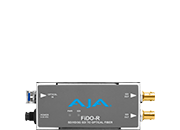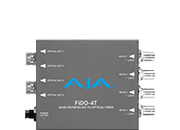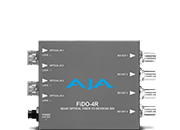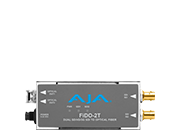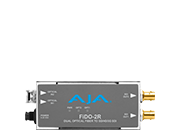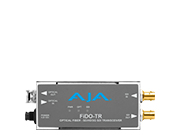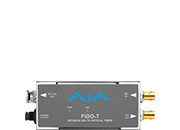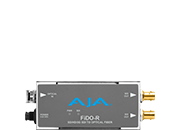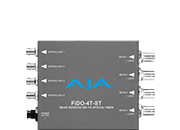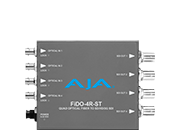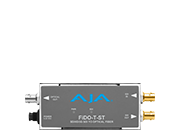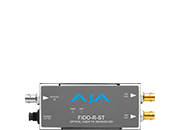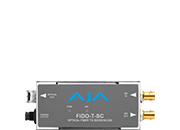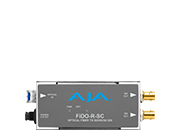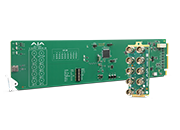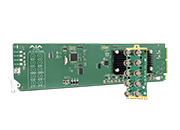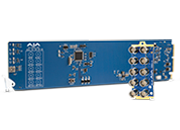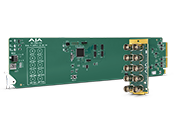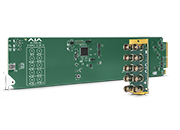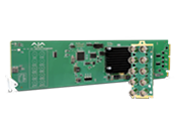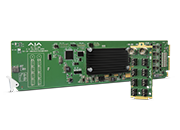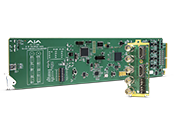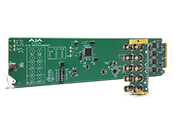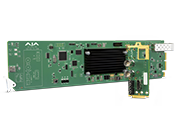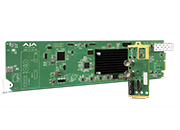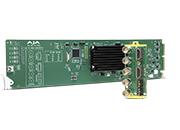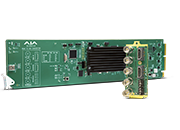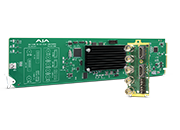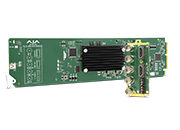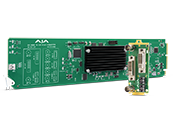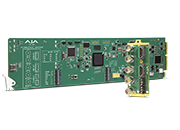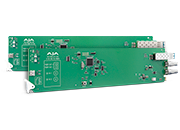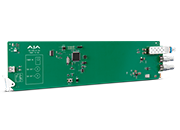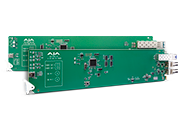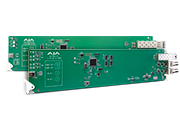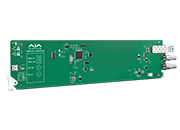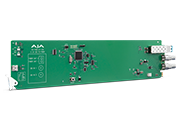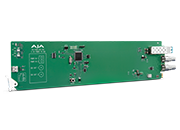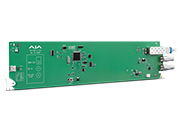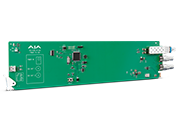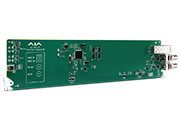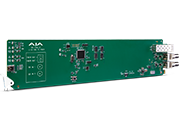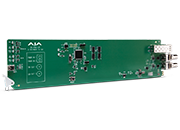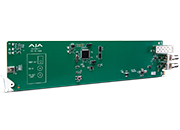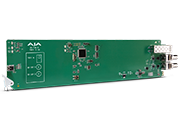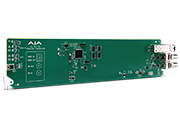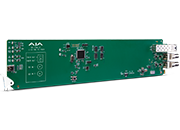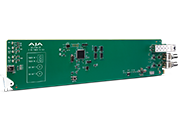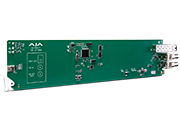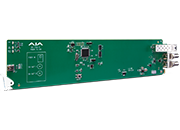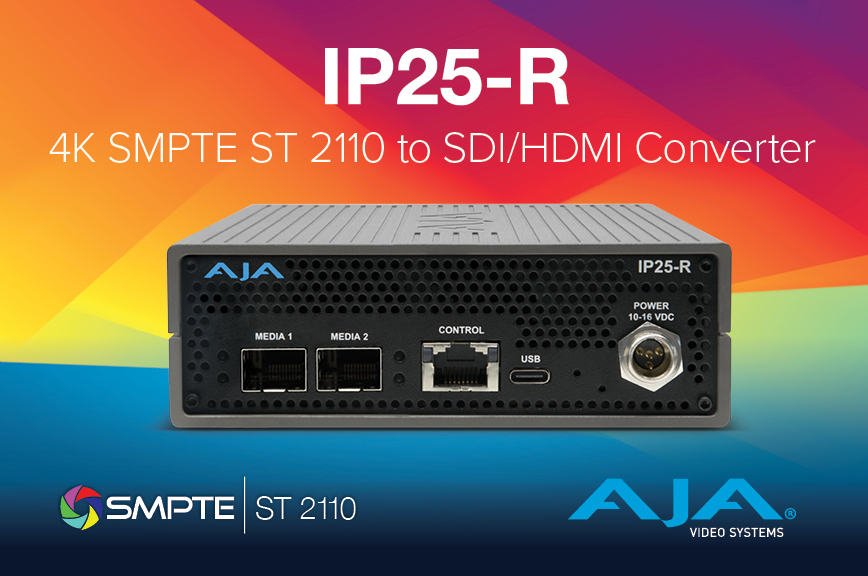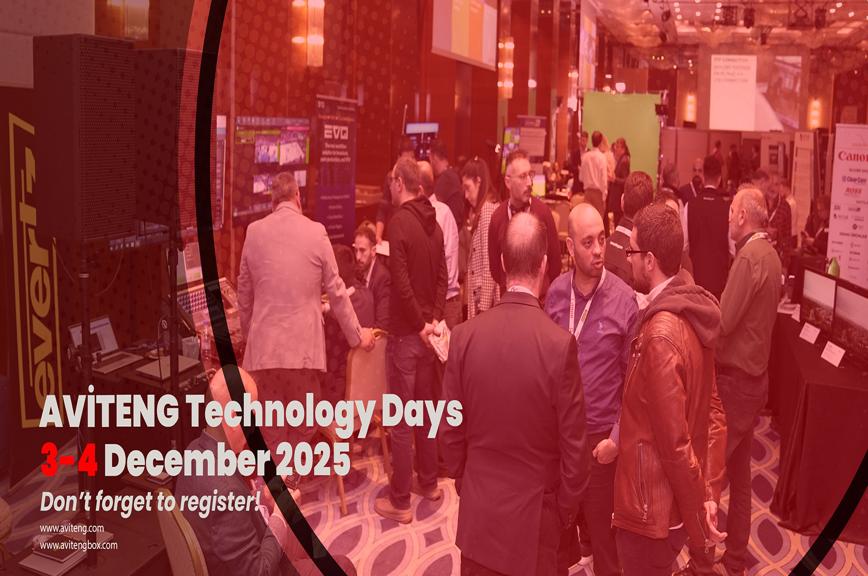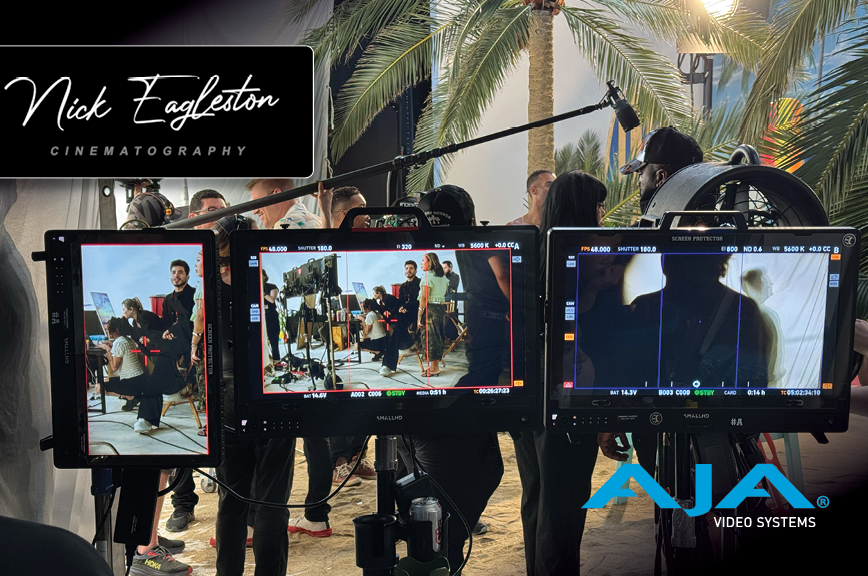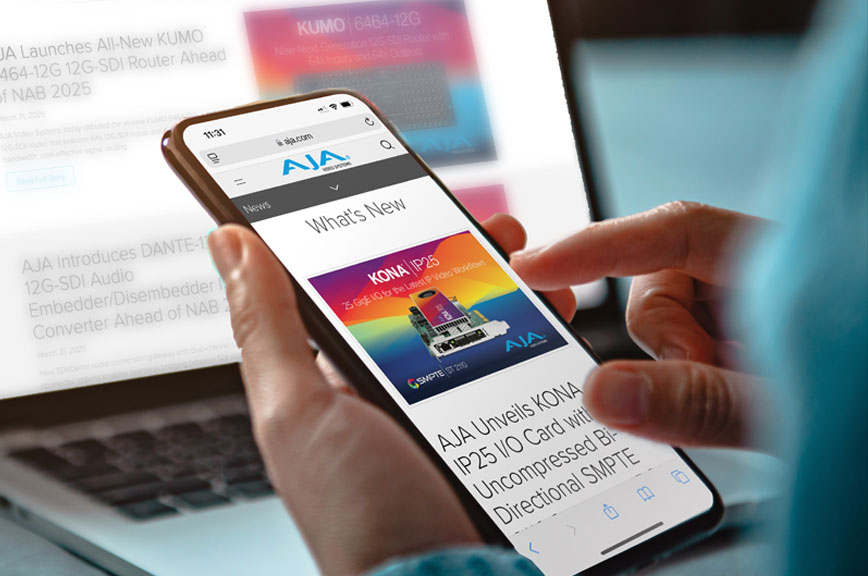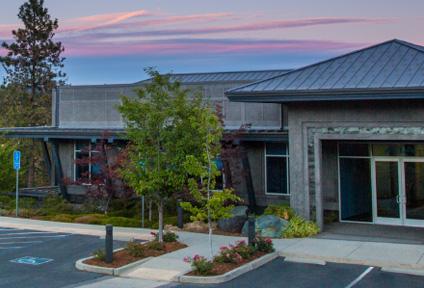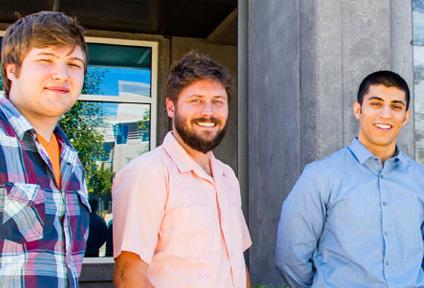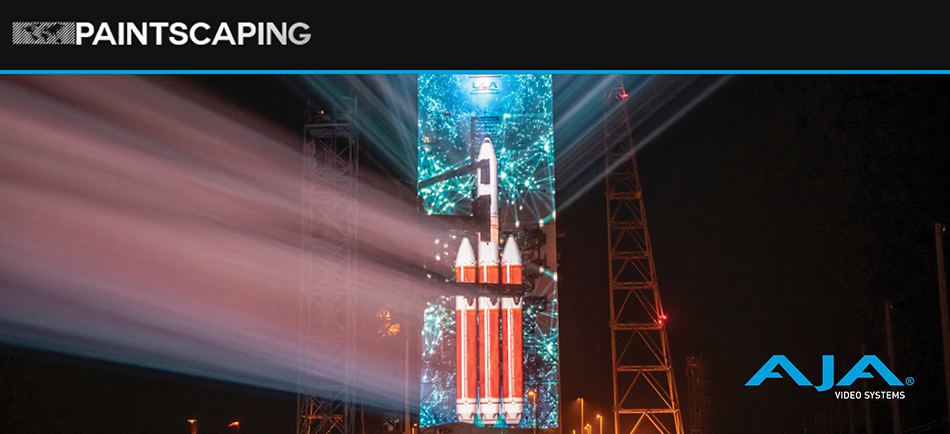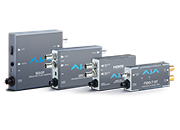Behind the Scenes of PaintScaping’s Dazzling 3D Projections
August 25, 2023
The entire world is a canvas for the creative technologists at Los Angeles-based PaintScaping, which currently holds a Guinness World Record for projecting a live video game display (on the side of a mountain, no less). It was also the first company to projection map the Hollywood sign and even mapped an active rocket. Brands come to PaintScaping when they want to make a splash. Bringing these supersized achievements to life requires a significant technical backend, which has become increasingly complex with 4K workflow adoption. We recently spoke with Mike Cianciola, PaintScaping’s Vice President of Operations to find out what goes into realizing large-scale 3D projection mapping projects and how AJA FiDO fiber Mini-Converters are essential for moving signals in even the trickiest scenarios.
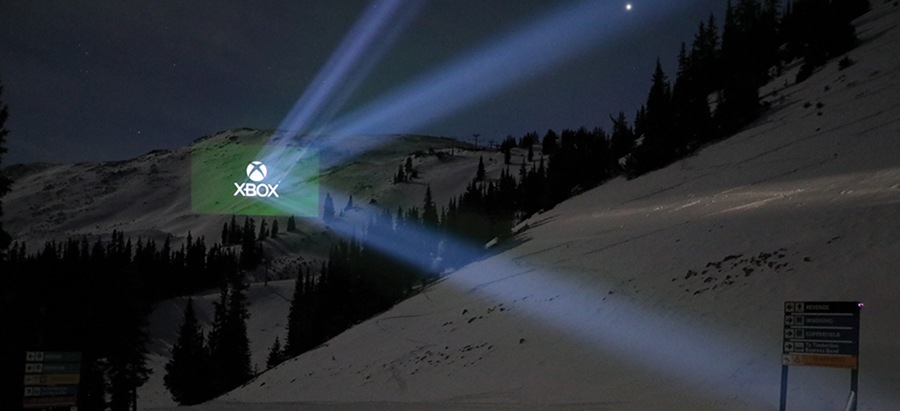
Tell us about PaintScaping.
3D projection mapping is PaintScaping’s core focus. We’re a small team who can projection map just about anything, though we’re drawn to more challenging projects. The founder and CEO of PaintScaping, Phillipe Bergeron, comes from the CG world. He co-directed the first animated short to feature a human character expressing emotions, “Tony de Peltrie.” It was truly groundbreaking, and he’s continued that spirit of innovation to push the boundaries of technology and art. Phillipe initially worked on 3D projections independently doing small one-off projects, during breaks between acting roles (you may recognize him from “The Sopranos” or more than 50 other credits). His projections started attracting a lot of attention, so the company grew by word of mouth.
What is your background?
I came on board in 2015 and have a history in event production, and audio and lighting for live events, festivals, and other types of performances. I’ve been deep in the production world for 30 years, working in the trenches and getting hands-on with the necessary equipment.
Describe a few PaintScaping projects.
Clients come to us when they really want to make an impact. Most of our projects have a storyline; we’re not just throwing sparkles onto a building. A good example of that is how we turned a concrete business compound into Santa’s workshop in Canada’s Victoria Harbor over the holidays. All the tubes, pipes, and bins became part of a present-making factory in the projection, and we added conveyor belts and little elevators to move the presents.
Last summer, we also did a projection mapping of the Hollywood sign for Black Entertainment Television, which was really cool. There was a lot of speculation on social media when we were testing the projection; people saw that something was going on but didn’t know what to expect so it generated buzz before the big reveal. We’ve mapped a Delta IV Heavy rocket at Cape Canaveral in Florida. We were projecting from a secure area, so we had to be escorted in and out, and there were unique technical considerations. Our team also projected onto the Bellagio Fountain in Las Vegas, NV a few times, including for the NFL draft; the San Diego Zoo, Dallas Zoo, and Los Angeles Zoo have also tapped us for projection mappings. We’ve even projection mapped mountains, a building on Rodeo Drive, and the background in the “This Is What You Came For” music video starring Rihanna (which has more than 2.6B YouTube views). We earned the Guinness World Record for Largest Projected Videogame Display for displaying Xbox’s “Destiny 2: Beyond Light” on the side of Copper Mountain in Colorado as snowboarder Grant Giller played the game live, online. The projected display was 19,090 sqft and at an altitude of 11,000 ft.
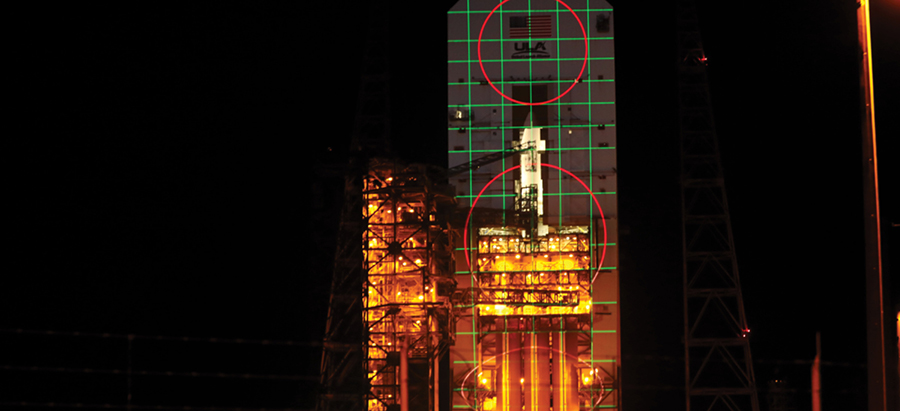
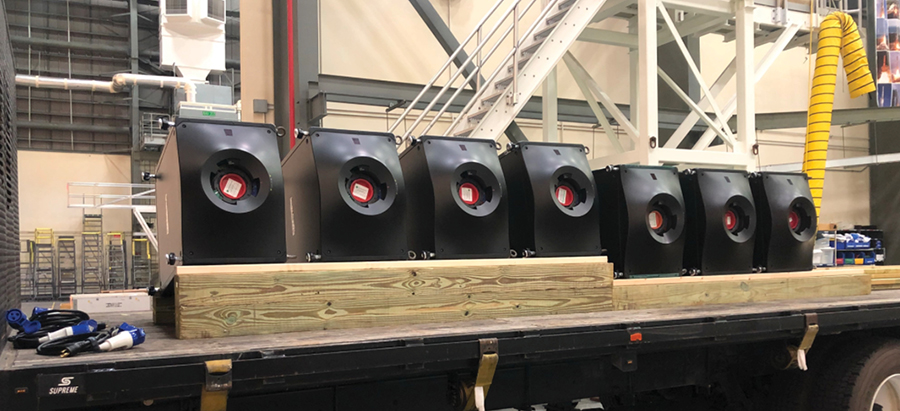
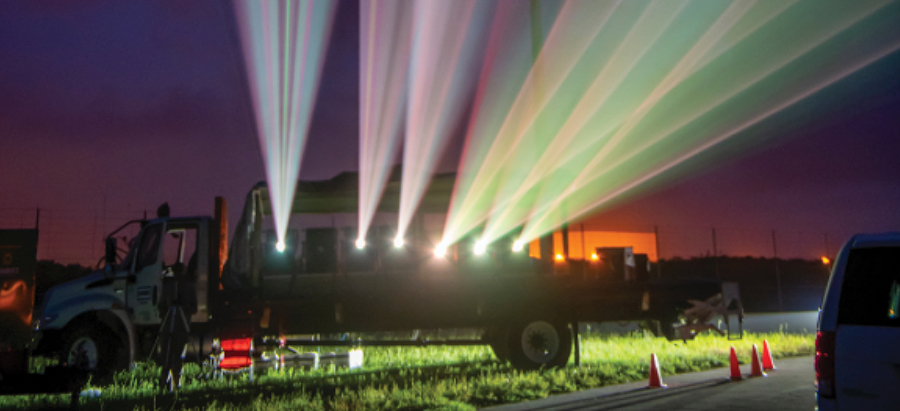
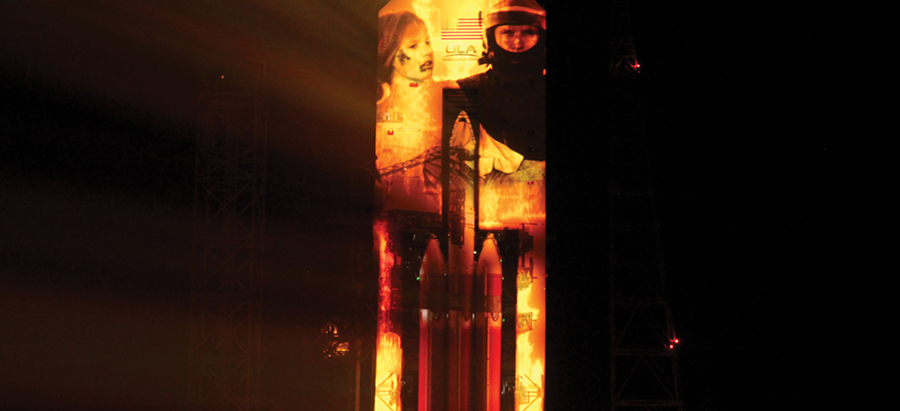
What challenges do you face in bringing these projects to life?
The projectors we use for 3D mapping are sizable and they must be strategically placed to display the imagery properly; this really limits where we’re able to place them and forces us to be creative on our physical installation. For example, we hired a crane and put the projectors on the roof of a house for the Hollywood sign 3D projection.
Describe a typical project workflow.
Projection mapping is bespoke to the location so each workflow is dependent on those parameters, as well as whether the installation will be temporary or permanent. We excel at large scale projections, where we can maximize every little bit of architecture, but we’ve also done projects with a single projector. Our typical range is 4-10 projectors. We start by creating a 3D model of what we’ll be projection mapping with photogrammetry, so that we can see the location in real light. Once our artist has created the 3D model, we'll pick the point of view to render our effects from, whether we have one or 28 projectors (our max to date). Then we start our animation process and building storyboards. We can work in 2D or 3D, depending on the media server and projectors we’re using, and apply different methods to map the structure. After the content is baked and renders from where the projector will be, we’ll just do some alignment. Also, converters are essential to routing signals.
Our creative tools are Autodesk Maya and Maxon Cinema 4D for the most part, with some Epic Games’ Unreal Engine, for content creation. For playback, we use MadMapper, Disguise, and Alcorn McBride servers, and we use AJA FiDO fiber Mini-Converters to move from HDMI and SDI between the media server and the projector; they’re really useful and reliable. We’ve also found the AJA openGear frame incredibly helpful for recent projects.
Are you following any particular technology trends?
Yes, 4K is top of mind. In the projector space, we've been in a 1080 HD world for a long time and now 4K is relevant to what we're doing for many reasons. For some installations, people are getting closer to the projections and aren’t necessarily standing 200 feet away, so you want the imagery to be as high resolution as possible so that viewers don’t see pixels. I’ve forced 4K 60p on us as our commercial standard for each job from the last year – no matter how hard – because we need to be accustomed to that workflow and know how to manage heavy files. This includes factoring in render times and moving the final deliverables across the internet. However, moving 4K signals is very challenging, and often requires 12G-SDI and fiber solutions, which is where the AJA FiDO solutions come into play. We use AJA FiDO 12Gs with tactical fiber to reliably move 4K signals more than 300-feet distances; they are perfect for that.
What do you love most about what you do?
I’m a nerd. I love cool gear and making technologies work together. I bought an AJA OG-X-FR openGear frame rack for a gig in Illinois and it turned out to be one of the best things I’ve purchased. The reliability and redundancy it provides just can’t be beat. When I do installs, I'm responsible for servicing gear at some point, but I prefer to create a great, reliable set up, then move on to the next project. My whole goal is to build something that never fails. Also, there’s an understanding that in event production it’s nearly impossible to balance quality, speed, and price – you’ll have to compromise in one area. We try to bridge those elements as much as possible to create projects affordably, fast, and with high quality, which is one of the many reasons why AJA products are always present in our workflows.
About AJA Optical Fiber Solutions
AJA FiDO Mini-Converters offer unmatched flexibility and cost efficiency for 12G-SDI, 6G-SDI, and 3G-SDI Fiber conversion, allowing for long cable runs up to 10km for single mode FiDOs and up to 700m (2296ft) for OM4 and 300m (984ft) for OM3 multi-mode fiber optic cables when using models with optional multi-mode SFPs. FiDO converters use a compact, low profile enclosure that works well in tight spaces around and behind equipment racks, trucks and on camera. www.aja.com/products/fido
About AJA OG-X-FR
openGear is an open-architecture, modular frame system designed by Ross Video and supported by a diverse range of terminal equipment manufacturers, including AJA. The AJA OG-X-FR is a 2RU high openGear frame which is compatible with any openGear card and offers Dashboard support for the latest AJA Dashboard compatible openGear cards. The frame has a 20-slot capacity with excellent cooling capabilities for high-density applications and compatibility with advanced openGear connectivity options for supported cards. www.aja.com/products/og-x-fr
About AJA Video Systems
Since 1993, AJA Video Systems has been a leading manufacturer of video interface technologies, converters, digital video recording solutions and professional cameras, bringing high quality, cost effective products to the professional broadcast, video and post production markets. AJA products are designed and manufactured at our facilities in Grass Valley, California, and sold through an extensive sales channel of resellers and systems integrators around the world. For further information, please see our website at www.aja.com.
All trademarks and copyrights are property of their respective owners.
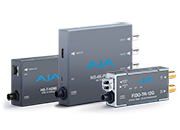 Mini-Converters
Mini-Converters
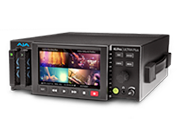 Digital Recorders
Digital Recorders
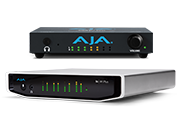 Mobile I/O
Mobile I/O
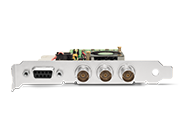 Desktop I/O
Desktop I/O
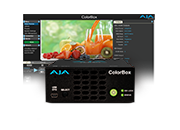 Color
Color
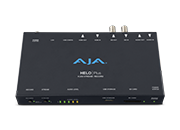 Streaming
Streaming
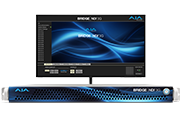 IP Video/Audio
IP Video/Audio
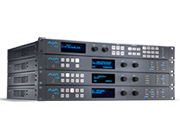 Frame Sync
Frame Sync
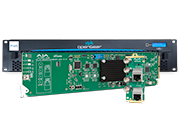 openGear
openGear
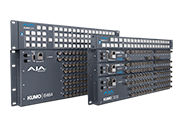 Routers
Routers
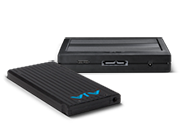 Recording Media
Recording Media
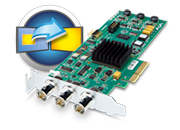 Developer
Developer
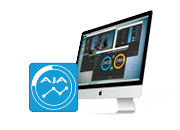 Software
Software
